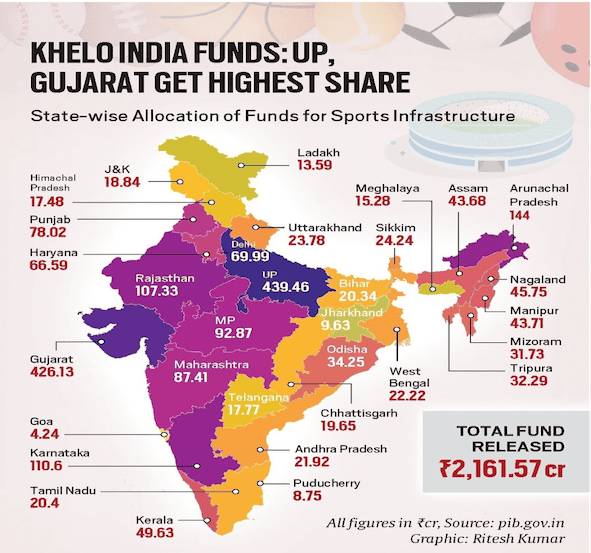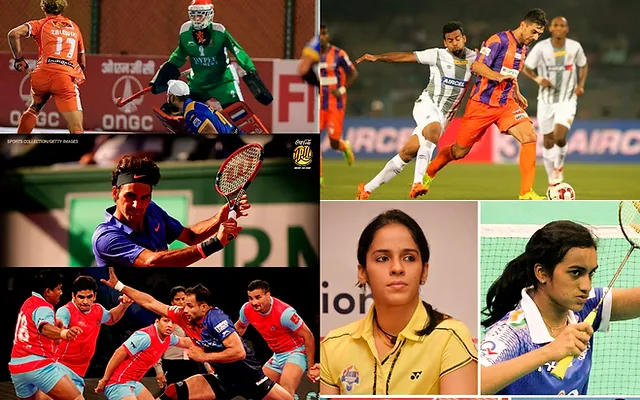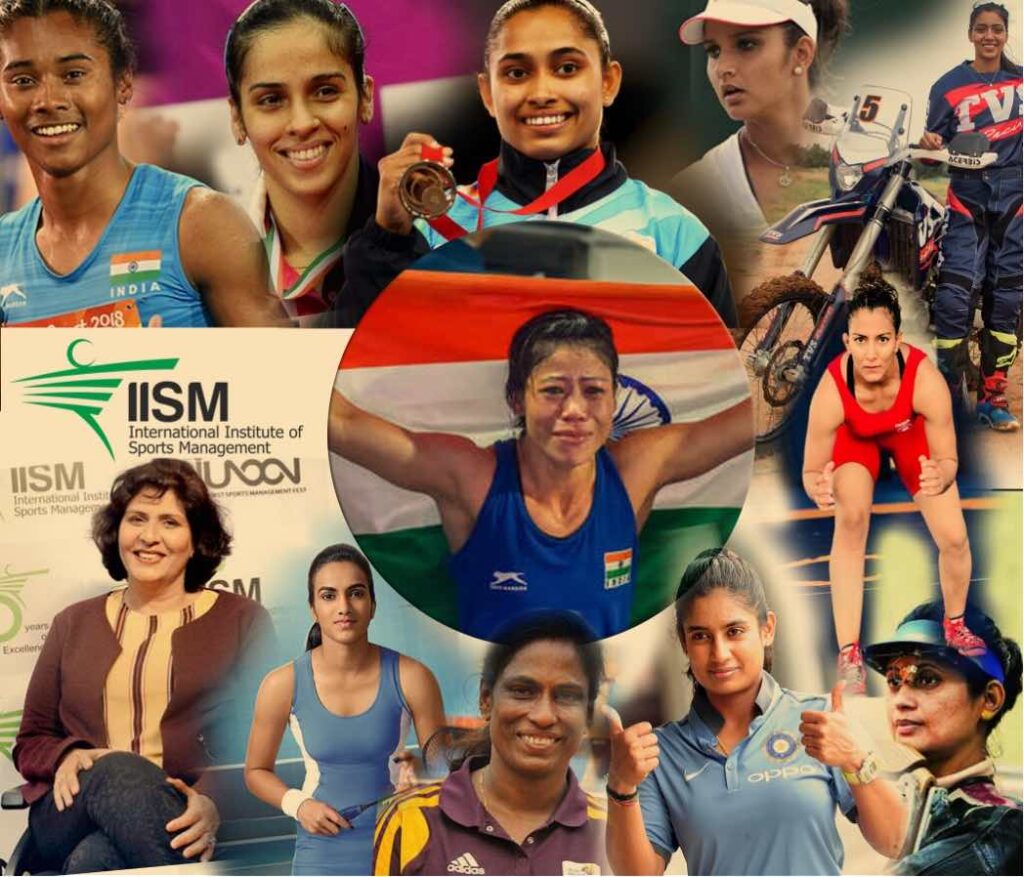Introduction
India is a country with a rich culture and deep diversity. Sports have always been considered an important part of society. In recent times, India has radically changed its approach to sports infrastructure. These changes aim to make India a significant force on the global sports scene.
It is gratifying to note that the central government has set itself the goal of making our country one of the fifth most developed countries in the world regarding sports policy, and then an industrialized nation in 2047.
Given the diversity that India offers, it has great potential to become a hotbed for sports. It is a diverse country that offers us many opportunities. We are fortunate to have many opportunities. Talent is limitless, just give it a chance.
It is important to understand that sports can protect future generations and produce a healthy, active, disciplined youth.

To achieve this, our country and our government should come up with an effective plan to promote sports in schools from an early age. India’s new education policy is a model that prioritizes sports as an important part of the school curriculum and shifts the focus of schools and parents from technology to sports. The implementation of this policy is a great responsibility for India and can serve as an example for other countries with large youth populations or with sports programs distributed to encourage children and their populations to participate in sports activities.
In the world of sports, it is important for a country not only to do well in competitions but also to host tournaments and increase its presence on the world stage.
As India prepares or tries to host the 2029 World Athletics Championships and the 2036 Olympics, it can benefit from partnerships and consultations with previous hosts of these events. India’s lack of success in international sports is due to many factors, including economic hardship, the lack of importance given to sports other than cricket in Indian culture, corruption and the lack of investment in sports and sports infrastructure.
The need to change the attitude towards sport:
A change of attitude towards sport is necessary. In India, the growth and development of athletes in all disciplines are hampered by the perception that sports are not a sustainable long-term career. This leads to underutilization of talent, lower prospects for economic growth and limited international recognition of sports other than cricket. The government and the private sector should work together to promote sports in India and change the perception that sports are not a good profession.

Sports infrastructure issues:
Infrastructure and financial support are the two main factors in building a great sporting nation.
Lack of funding, poor infrastructure, low attendance at international tournaments, lack of media attention and sports administration politicization are some of the main factors affecting sports in India.
Investments in sports infrastructure such as stadiums, training facilities and sports complexes will provide athletes with the necessary facilities and motivation to train and compete at a high level.
Adequate infrastructure, including well-maintained public parks, sports facilities and community centres, is essential. This requires cooperation between local authorities, educational institutions and sports associations. The development of sports infrastructure in India is a growth story. Over time, the country has invested a lot of resources in improving stadiums, training facilities and athlete support systems.
However, major challenges remain to significantly improve sports infrastructure, make sports accessible to all, and promote young sports talents in the country.
The Sports Authority of India (SAI) is the main organization responsible for the development of sports infrastructure in the country.
Providing financial support for training and capacity building. It also aims to create a vibrant sports ecosystem in the country and provide a platform for young athletes to showcase their skills.
India has about 100 sports venues that meet international standards of sports infrastructure.
Khelo India is a big initiative by the government to develop sports infrastructure in the country. Under the flagship program Khelo India, 282 sports infrastructure projects worth $1,431.25 million have been implemented in India in the last five years. Khelo India, an innovative scheme of the central government, has been instrumental in identifying and nurturing sports talents in various parts of the country.
Central and state governments as well as the private sector should continue to invest in sports infrastructure and facilities to ensure that existing facilities are properly maintained.
This will help build a sports culture in the country, promote young talents and strengthen the country’s sports image in the world.

The impact of sports development on tourism:
The development and improvement of stadiums and other sports facilities in the region significantly increase tourism and serve as venues for major sporting events. They also encourage physical activity and sports participation among the general public.
The economic impact of sporting events:
In addition, the influx of fans increases spending in various sectors such as hospitality, retail and transportation, which significantly boosts the economy. Sporting events create a lot of jobs.
Private companies and sponsors have also realized the potential of sports in India. Leagues such as the Indian Premier Cricket League (IPL), the Indian Super League (ISL) and the Pro Kabaddi League have attracted significant investment. This influx of funds improved the facilities and increased the popularity of the sport throughout the country. In India, many sports facilities are still in poor condition and unsafe for training athletes. This can discourage people from using these facilities and harm the development of sports in the country.
To take sports to the next level in India, we need to invest in sports infrastructure. We need modern, well-managed stadiums, training facilities and academies in different parts of the country so that athletes have the tools and opportunities they need to improve their skills.
The combined efforts of the central and state governments, the private sector and the growing public interest have enabled the country to achieve its greatest sporting prowess in the world. India continues to invest and develop its sports infrastructure, which ensures a bright future in international sports.
The role of the media in the development of sport:
The media should highlight every sport and make people aware of every sport. We must not forget that apart from cricket there are many other sports and games. Children and young people should be motivated to try other sports. All sports should be encouraged to improve the sports level in our country.
Conclusion
A quality and adequate sports infrastructure does not mean only the construction of facilities; it is also an investment in the health, well-being and potential of individuals and communities. Prioritizing the development of sports facilities that meet global standards will ensure that the full benefits of sports are realized. Sport promotes not only individual development and sporting performance but also social cohesion and community resilience. We help athletes realize their full potential, increase community involvement and create a culture of inclusion and excellence.
Recent reports indicate that the sport has seen significant growth in India thanks to increased funding, improved infrastructure and numerous victories in international tournaments, including wrestling, shooting, badminton, cricket and struggle. This will revitalize the entire sports ecosystem in the country.
Let us all work together with our governments to realize the full potential of sport and build a healthier and more vibrant society for all. We can unleash the unlimited potential that lies within each of us.
Written by Manjushree Sudheendra
Edited by Helee thaker




